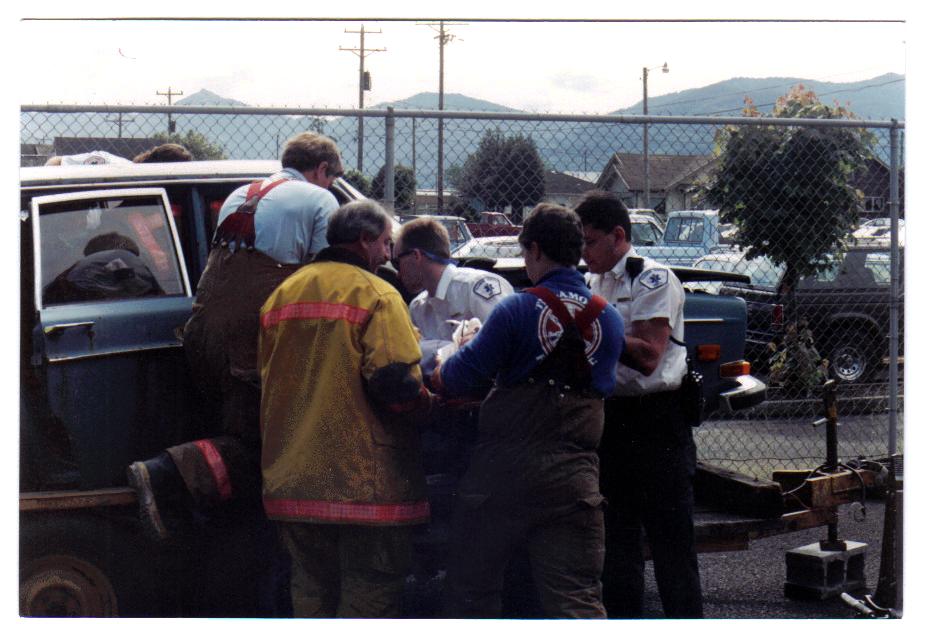My first post in this series I mentioned to be aware of the quiet patient. I’d like to say I learned that lesson that day…but it didn’t happen that way. The call I am writing about in this post is not one I really care to remember, it’s just one that’s stuck around. I know I learned several lessons from it and maybe someone else will too.
On this call I am still an EMT Basic. It was a winter Sunday morning and our call was a motor vehicle crash at nearly the same location as my first post. There were four older ladies on their way to church. The driver had tried to enter the highway and a car coming around the blind corner ended up t-boning them on the passenger side. Decades later the department of transportation would fix this intersection. I have no idea how many people were injured and killed before the change came. I know there were many. I transported my share.
I ended up with two patients in the back of my ambulance and both appeared quite stable. The patient on a portable stretcher on the bench seat had numerous lacerations. The patient on the gurney had assorted cuts and scrapes, a R lower leg fracture and complaint of pain in her upper R arm. Both patients were conscious and alert and no complaints of trouble breathing. They might have weighed 100 KG combined.
My patient with the leg fracture was dressed in her Sunday best and had on a long puffy warm coat. There was no way to slip the coat off her without causing pain and I felt bad about cutting it and destroying it. I chose to not cut it off. It was a twenty-five minute run to the hospital and I would go back and forth between my patients checking on them. Like many of their generation they were reluctant to complain about anything. When we were maybe five minutes from the hospital, my patient on the gurney was becoming increasing drowsy and hard to get her to respond to me. When I did get her to respond she would just say she was fine, just tired. By the time she was wheeled into the ED she was unconscious.
I stayed and helped in the ED as they tried to resuscitate her. Such a nice polite older lady who never complained. I remember staring at her coat when it was removed in the ED. The whole R side was soaked in blood inside but not a spot on the outside. The coat must have weighed several pounds heavier with all the blood it had hidden.
Three things I leaned that day. The first is that patients can move from conversant to quiet in a short period of time. The second thing is to never hesitate to expose something in order to confirm or rule it out as a problem. The last thing is I learned just how much blood can be contained in clothing. Probably explains why I would include a blood loss estimation lab in my trauma classes decades later.
I guess there is some risk in me writing about a bad outcome but I’d rather suffer a little shame than see someone else have to learn these lessons like I did. I’d appreciate hearing about experiences readers may have had.




Thank you for sharing.
Keep writing. We are learning. Thank you.
Whether you are a new EMT or a seasoned Paramedic we are all always learning, if we just give an ear to listen to those around us. Thank you for sharing !